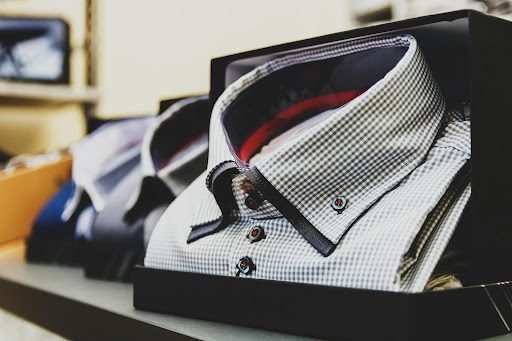The clothes we wear speak volumes about who we are long before we utter a word. Power dressing, a term that evokes images of tailored suits and sharp blazers, isn’t just about fabric and fashion. It’s about psychology, a statement to the world that the wearer means business. Underneath the seams and stitches lies a powerful social tool that can influence perceptions, enhance confidence, and pave pathways to success.
The Subconscious Power of Clothing
Clothing is a silent communicator. What someone wears can send signals about their status, intentions, and identity. Power dressing leverages this principle by emphasizing authority and professionalism through wardrobe choices. But how does wearing a finely tailored suit or crisply pressed shirt affect the mind?
Studies suggest that clothing impacts cognitive processes, enhancing abstract thinking and boosting self-confidence. This phenomenon, known as “enclothed cognition,” explains how the act of wearing clothing associated with intelligence or authority can mentally affect a wearer. A lawyer in a sleek suit or a CEO in a structured dress may not just look dominant; they may feel the part, translating that confidence into presence and performance.
However, selecting the right attire goes beyond a simple choice of wearing common power garments. Many professionals find the allure of customized solutions appealing as it allows personal style to mesh seamlessly with professional requirements. Enter options like mens custom suits, where expert tailoring ensures every piece is both a statement of authority and a reflection of one’s unique identity.
Perception is Reality
The clothes we wear frame our persona. In professional settings, dressing sharply can amplify perceptions of competence and credibility. Humans are wired to make snap judgments and, rightly or wrongly, are influenced by appearance. A well-dressed individual often commands greater respect and attention, with studies reinforcing that those in tailored attire are perceived more favorably.
On the other side of the coin, failing to adhere to expected dress codes can yield negative impressions. An investment banker in casual wear may send a subconscious signal of carelessness or lack of attention to detail, even if unwarranted. Adhering to the sartorial standards of one’s industry is about fitting in while standing out — a careful balancing act.
Moreover, the intricate dance of clothing and perception isn’t limited to job interviews or typical office environments. In creative fields, where individual expression is prized, the pressure to convey competence through attire still lingers. Even in less formal settings, colleagues and clients consciously or subconsciously assess attire, equating attention to dress with attention to detail. Power dressing remains an understated yet formidable tool in building trust and rapport across various industries.
Boosting Confidence Through Clothing
Dressing the part can invoke an inner transformation. Power dressing does not only alter how others see us but fundamentally changes how we see ourselves. Morning routines, often steeped in dressing rituals, serve as psychological priming for the day ahead. Slipping into attire associated with productivity and accomplishment often primes minds for a productive and effective day.
This sartorial psychology intertwines closely with personal identity. For many professionals, donning a white-collared shirt or a bold red dress is not just about appearances; it’s about self-expression, fuel for inner strength, and a tangible manifestation of confidence. Dressing sharply cannot manufacture competence or replace skills, but it certainly can highlight and enhance existing abilities.
Interestingly, this confidence isn’t merely about face-to-face interactions. Individuals report feeling a positive shift when wearing power attire during virtual meetings. It appears that the physical act of dressing well, even when only the upper half is visible, evokes the same psychological benefits. The subconscious connection between clothing and confidence transcends physical spaces, hinting at the fundamental role attire plays in self-perception and interpersonal dynamics.
Breaking Stereotypes, Embracing Individuality
As workplaces evolve, so too do definitions of power dressing. What once dictated strict conformity in the forms of dark suits and simple ties shifts towards expressions of individuality. While the core principle behind power dressing remains unchanged — projecting strength and authority — there is room for personal flair and originality.
In contemporary settings, a brightly patterned blazer or a signature pair of shoes can act as instruments of personal branding, standing as emblems of confidence and character. These nuanced incorporations can create memorable, lasting impressions without forfeiting perceived professionalism.
Additionally, this evolution is a testament to the growing acceptance of personal identity in professional realms. As businesses more openly acknowledge diverse backgrounds and cultures, the definition of professional attire embraces this diversity. By integrating cultural and personal elements into their wardrobe, individuals not only challenge traditional norms but showcase the richness of global influences in modern professionalism.
The Final Stitch
The essence of power dressing goes beyond outward appearances. It is a strategy, a mindset rooted in psychology, that actively influences perceptions and nurtures confidence. Decades of study and practice endorse the belief that dressing with purpose can determine the trajectory of interactions and outcomes.
In the labyrinth of professional environments, making strategic clothing choices can propel individuals to new heights, not through superficial adornment but as an extension of identity and ambition. Donning power attire becomes more than a daily ritual; it becomes a strategic asset, part of the toolkit to succeed in any boardroom or negotiation.






